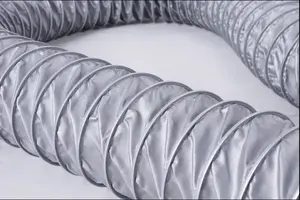
Industrial Large Diameter Flexible Spiral Flame Retardant 150mm Air Duct Ducting Hose Tube





















Collapsible ventilation air ducts are integral components in modern HVAC systems, designed to provide a flexible solution for air distribution and ventilation in various settings. These ducts are crafted to facilitate the efficient transfer of air with minimal loss of pressure, making them suitable for a wide range of applications.
The collapsible ventilation air duct category encompasses a variety of types, each tailored for specific environments and uses. Materials commonly used in the construction of these ducts include durable fabrics, coated with specialized materials to resist heat, moisture, and chemical exposure. This ensures longevity and reliability in diverse conditions.
Flexible ventilation duct hose products are versatile, finding their place in industries ranging from mining to construction, and even in temporary setups like event spaces. Their features include ease of installation, resistance to collapse under pressure, and the ability to retract into a compact form for storage and transport.
The use of a flexible HVAC hose presents numerous advantages. Its flexibility allows for installation in tight spaces and around obstacles, which rigid ductwork cannot navigate. Additionally, the lightweight nature of these ducts reduces the load on supporting structures and simplifies handling.
A key characteristic of the collapsible ventilation air duct is its adaptability to various environmental conditions. The materials used are selected to maintain performance in extreme temperatures and to prevent the growth of mold and mildew, which is crucial for maintaining air quality.
When selecting a flexible ventilation duct hose, it is important to consider factors such as diameter, length, and the specific requirements of the ventilation system. It is also vital to ensure compatibility with existing HVAC components to achieve optimal performance.